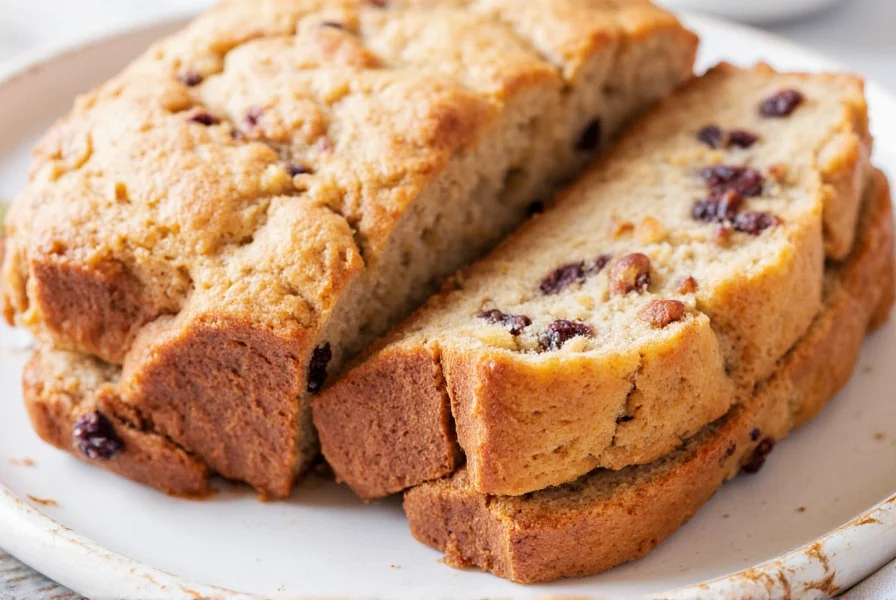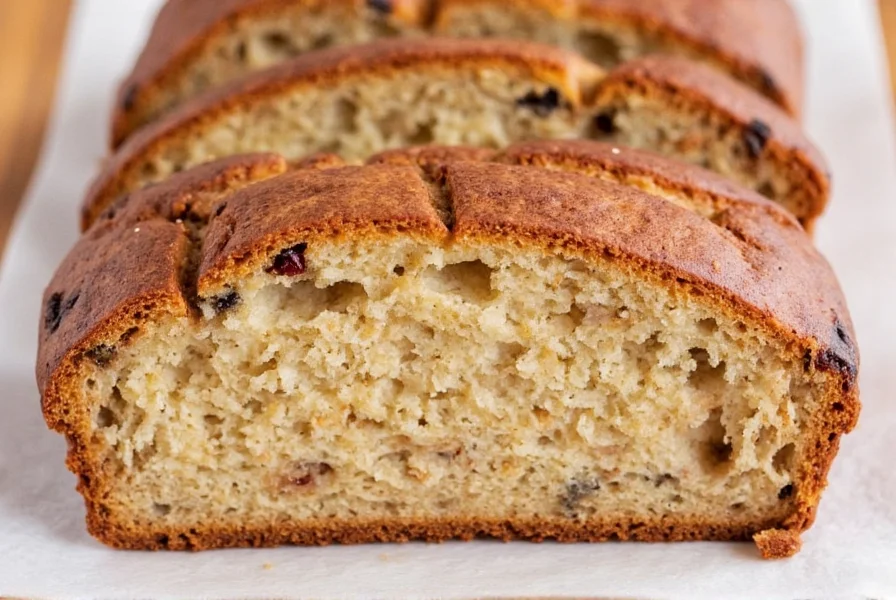Cinnamon and raisin bread represents one of the most beloved sweet bread traditions across many cultures. This classic combination transforms simple bread ingredients into something extraordinary through the magic of warm spices and dried fruit. Whether enjoyed toasted for breakfast or sliced as an afternoon treat, properly made cinnamon raisin bread offers a perfect harmony of textures and flavors that has stood the test of time.
The History Behind Cinnamon Raisin Bread
While bread itself dates back thousands of years, the specific combination of cinnamon and raisins emerged as baking traditions evolved in Europe. Cinnamon, once more valuable than gold, became more accessible through trade routes, while raisins provided natural sweetness before refined sugar was widely available. By the 19th century, this pairing had become a staple in American households, particularly in regions with strong German and Scandinavian baking influences where sweet breads were common.
Essential Ingredients Explained
Understanding each component's role ensures your homemade cinnamon raisin bread turns out perfectly every time. Don't underestimate the importance of ingredient quality and proper preparation.
| Ingredient | Function | Professional Tip |
|---|---|---|
| All-purpose flour | Provides structure through gluten development | Measure by weight (120g per cup) for accuracy |
| Active dry yeast | Rises the dough through fermentation | Test freshness in warm water with pinch of sugar |
| Ceylon cinnamon | Delivers complex, warm flavor without bitterness | Use freshly ground for maximum aroma and potency |
| Golden raisins | Provides sweet bursts without overwhelming tartness | Soak in warm water or rum for 15 minutes before use |
Step-by-Step Cinnamon Raisin Bread Recipe
Follow these detailed instructions for bakery-quality results in your home kitchen. This traditional cinnamon raisin bread method yields two perfect loaves.
Dough Preparation
- Combine 1 cup warm milk (110°F), 2 ¼ teaspoons active dry yeast, and 1 tablespoon sugar in a small bowl. Let sit for 5-10 minutes until foamy.
- In stand mixer bowl, combine 5 cups all-purpose flour, ⅓ cup sugar, 1 teaspoon salt, and 2 large eggs.
- Add yeast mixture and ⅓ cup softened butter. Mix with dough hook on low until combined.
- Knead on medium speed for 8-10 minutes until smooth and elastic, adding additional flour as needed.
- Place dough in greased bowl, cover, and let rise in warm place for 1-1.5 hours until doubled.
Filling and Shaping
- Mix ½ cup softened butter, 1 cup packed brown sugar, and 3 tablespoons freshly ground Ceylon cinnamon.
- Roll risen dough into 18x12 inch rectangle on floured surface.
- Spread cinnamon filling evenly, leaving ½ inch border. Sprinkle with 1 ½ cups plump, drained raisins.
- Roll tightly from long side, pinch seam to seal. Divide into two loaves.
- Place each in greased 9x5 inch loaf pan, cover, and let rise 45-60 minutes until puffy.

Professional Baking Techniques
Achieving the best cinnamon raisin bread requires attention to detail throughout the process. These expert techniques separate good bread from exceptional bread.
Temperature Control
Maintaining proper temperatures throughout the process ensures optimal yeast activity and texture. Milk and water should be between 105-115°F—too hot kills yeast, too cold slows activation. The ideal rising environment is 75-85°F. For consistent results, use a digital thermometer rather than estimating by touch.
Raisin Preparation
Properly prepared raisins make a significant difference in your final product. Soaking raisins in warm water, tea, or even rum for 15-20 minutes plumps them and prevents them from absorbing moisture from the dough during baking. Drain thoroughly before using to avoid excess liquid in your cinnamon swirl. For golden raisins, which are naturally sweeter and less tart, this step is particularly important for maintaining the delicate flavor balance in your traditional cinnamon raisin bread.
Common Problems and Solutions
Even experienced bakers encounter issues with cinnamon raisin bread. Understanding these common problems helps troubleshoot effectively.
- Tough texture: Usually caused by over-kneading or too much flour. Measure flour by weight for accuracy and stop kneading once the dough passes the windowpane test.
- Filling leakage: Results from too much filling, improper sealing, or insufficient chilling before baking. Use the recommended filling amounts and chill shaped loaves for 15 minutes before baking.
- Dry bread: Often from overbaking or insufficient fat content. Check for doneness at minimum recommended time and ensure proper butter measurement.
- Muted cinnamon flavor: Caused by old or low-quality cinnamon. Use fresh Ceylon cinnamon and consider adding a pinch of cardamom to enhance the spice profile.
Variations to Try
Once you've mastered the classic cinnamon raisin bread recipe, experiment with these delicious variations that maintain the essential character while adding new dimensions.
- Nutty version: Add ½ cup toasted walnuts or pecans to the filling for complementary crunch.
- Citrus twist: Incorporate 1 tablespoon orange or lemon zest into the dough for bright flavor contrast.
- Spiced upgrade: Enhance the cinnamon with ½ teaspoon each of nutmeg and allspice for deeper complexity.
- Gluten-free adaptation: Use quality gluten-free flour blend and add 1 teaspoon xanthan gum for structure.
Serving and Storage Recommendations
Maximize your homemade cinnamon raisin bread enjoyment with these professional tips for serving and preservation.
For optimal flavor, allow bread to cool completely (2-3 hours) before slicing. This prevents tearing and allows flavors to fully develop. When ready to serve, slice with a serrated knife using a gentle sawing motion. Toasting enhances the experience—spread with softened butter or cream cheese for an exceptional treat.
Store cooled bread in airtight container at room temperature for up to 3 days. For longer storage, wrap tightly in plastic wrap followed by aluminum foil and freeze for up to 3 months. Thaw at room temperature while still wrapped to prevent condensation. Never refrigerate bread, as this accelerates staling through starch retrogradation.
Frequently Asked Questions
Can I use regular cinnamon instead of Ceylon cinnamon in cinnamon raisin bread?
Yes, you can use regular cassia cinnamon, but Ceylon cinnamon provides a more complex, less bitter flavor that works better in sweet breads. If using cassia, reduce the amount by 25% as it's stronger and more pungent. For the most authentic homemade cinnamon raisin bread experience, fresh Ceylon cinnamon delivers superior results.
Why do my raisins sink to the bottom of my cinnamon raisin bread?
Raisins sink when they're too wet or when the dough isn't thick enough to support them. Properly drain soaked raisins and toss them in 1-2 tablespoons of flour before adding to the filling. This creates a barrier that prevents them from sinking during baking and ensures even distribution throughout your cinnamon raisin bread.
How can I make my cinnamon raisin bread softer for longer?
For softer cinnamon raisin bread that stays fresh longer, ensure proper hydration in your dough (the surface should be smooth but not sticky). Adding 1-2 tablespoons of milk powder boosts softness, while a small amount of honey or brown sugar in the dough helps retain moisture. Proper storage in an airtight container is crucial—never refrigerate bread as this accelerates staling.
Can I make cinnamon raisin bread without yeast?
Traditional cinnamon raisin bread requires yeast for proper texture and rise. However, you can make a quick bread version using baking powder instead of yeast, though the texture and flavor profile will differ significantly from authentic yeast-raised cinnamon raisin bread. Yeast provides the distinctive airy crumb and complex flavor development that defines this classic sweet bread.











 浙公网安备
33010002000092号
浙公网安备
33010002000092号 浙B2-20120091-4
浙B2-20120091-4